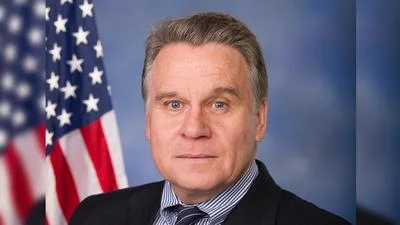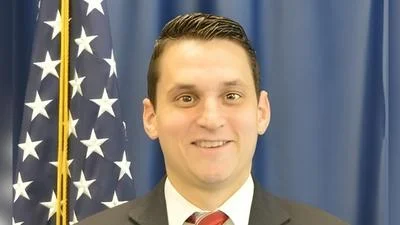The Congressional Record is a unique source of public documentation. It started in 1873, documenting nearly all the major and minor policies being discussed and debated.
“THE NUCLEAR WASTE POLICY ACT OF 1997” mentioning the U.S. Dept. of Energy was published in the Senate section on pages S2732 on March 20, 1997.
The publication is reproduced in full below:
THE NUCLEAR WASTE POLICY ACT OF 1997
Mr. CRAIG. Mr. President, I am very pleased that the Senate is now prepared to take up the Nuclear Waste Policy Act of 1997. It is time that this Congress clarify its intentions for the disposal of spent nuclear fuel and nuclear waste. It is for this reason that I introduced the Nuclear Waste Policy Act of 1996, which passed successfully in this body last year, and it is why I am a sponsor of S. 104 this year. We must resolve the problem that this Nation faces with disposing of nuclear material. Congress must recognize its responsibility to set a clear and definitive nuclear disposal policy. With the passage of this legislation in the last Congress, the Senate expressed its will that Government fulfill its responsibilities.
One major provision of this legislation directs that an interim storage facility be constructed at Area 25 at the Nevada Test Site and that the interim facility be prepared to accept materials by November 30, 1999. The first phase of this two-phase facility will be of a sufficient size to accept spent fuel from commercial reactors, shut down reactors and the Department of Energy.
As reported out of Committee, S. 104 includes a provision which I introduced. This provision clarifies Congress' intent to provide for the timely removal of spent nuclear fuel and high-level radioactive waste from the Government's national laboratories and defense programs. Under this provision, the Department of Energy is required to remove Government nuclear waste and spent nuclear fuel from our national laboratory sites in an amount equal to at least 5 percent of the total waste DOE accepts into the interim storage facility every year.
In addition to the billions of dollars that utility ratepayers have contributed to the disposal fund, taxpayers have contributed hundreds of millions of dollars to the disposal program for the removal of spent fuel and nuclear waste from the Nation's national laboratory sites. The provision I have sponsored makes good on the Government's commitment to clean up these sites and shows a return on the taxpayer money committed to this disposal program.
This provision assures that the spent fuel from the U.S. Navy reactors currently stored at the Idaho National Engineering and Environmental Laboratory will begin to be sent to the interim storage facility beginning in 1999. This is good news for both the DOE and for Idaho. Spent nuclear fuel will be moved out of Idaho well before the agreed date of 2035 called for in the agreement between Idaho Governor Batt, the DOE and the Navy. The fuel that is now temporarily stored in Idaho will be at the designated facility designed for long term disposal.
In my opinion, this legislation is important because it closes off the ``escape routes'' that exist in past legislation on this issue and have stymied the opening of a facility that actually accepts spent nuclear fuel and stores or disposes of it at a permanent facility. S. 104 closes these escape routes by specifying an interim facility location and a date for the opening of that facility.
Congress must own up to its responsibilities for the disposal of nuclear materials that it assumed through statute in 1982; a responsibility that 40 utilities and other organizations from 23 States are suing the Federal Government right now in the U.S. Court of Appeals to fulfill. The passage of S. 104 will take a major step in that direction and stem the Government's potential liability for failure to fulfill its contractual commitments--a potential hemorrhage of billions of dollars in judgments against the Department of Energy. By this action, spent nuclear fuel that is currently stored at nearly 100 different sites around the country--sites that were never designed for long-term storage--will be move to one central location: A location that is specially designed for such storage.
In the course of this debate, we will hear a lot of discussion from those on both sides of this issue about transportation. Those who don't want to address the nuclear waste issue are likely to raise the specter of a ``mobile Chernobyl.'' This scaremongering is simply not supported by the facts.
The fact is that there have been over 2,500 commercial shipments of spent fuel in the United States, and that there has not been a single death or injury from the radioactive nature of the cargo. Let me add to these statistics by noting that in my State there have been over 600 shipments of Navy fuel and over 4,000 other shipments of radioactive material. Again, there have been no injuries related to the radioactive nature of these shipments. This is an exemplary safety record--a product of the care and rigorous attention with which these materials are transported.
I know that many people would prefer not to address the problem of spent nuclear fuel disposal. But for this Congress not to address the problem would be irresponsible. As the legislative body that sets policy for the Nation, Congress cannot sit by and watch while a key component of the energy security of this Nation, and the source of 20 percent of our country's electricity, nuclear power, drowns in its own waste.
The Nuclear Waste Policy Act of 1997 will do what neither the 1982 nor the 1987 act accomplished, and that is to definitively resolve the question of what to do with spent nuclear fuel in a timely manner. I look forward to its successful passage.
____________________








